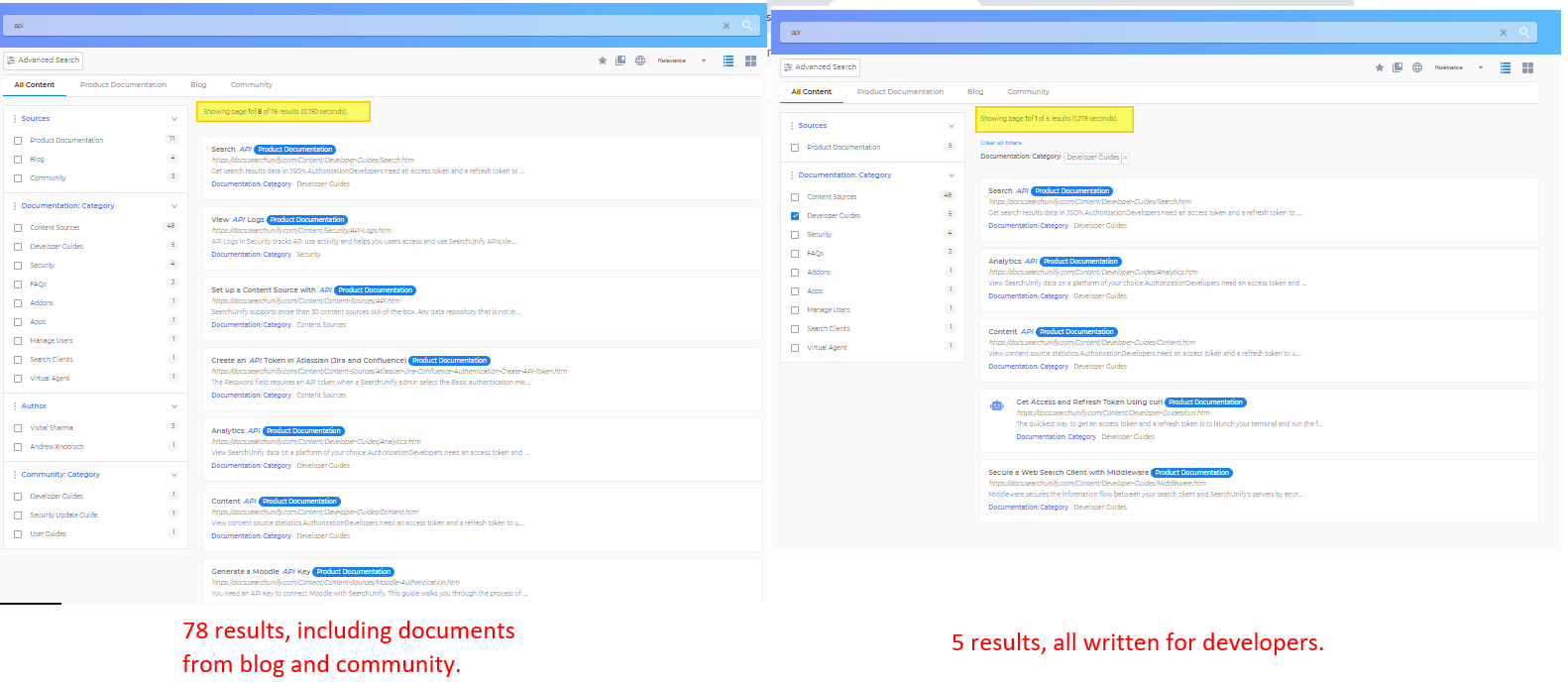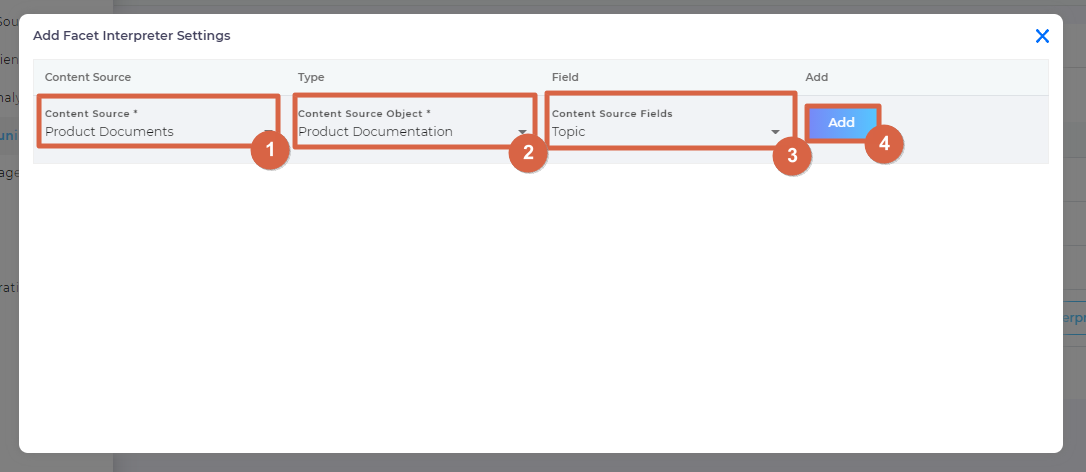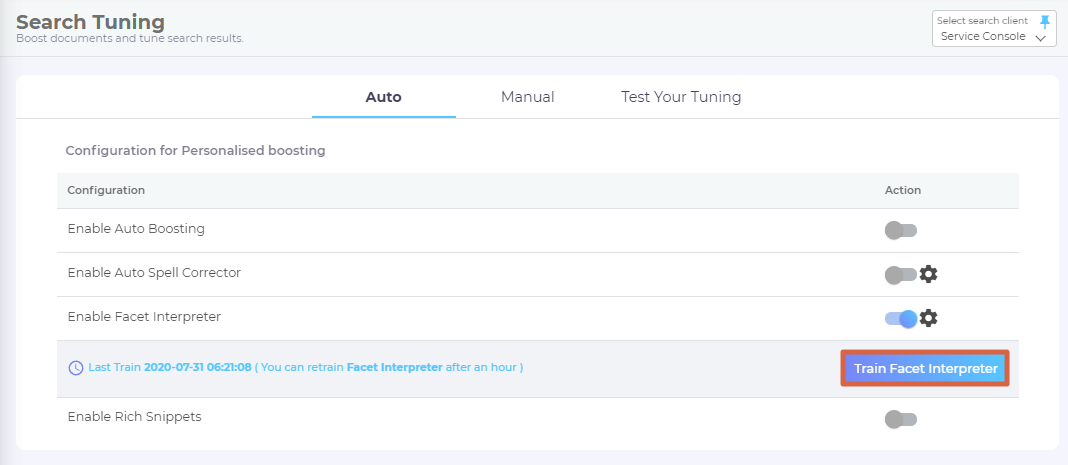Enable Facet Interpreter
Counterintuitive although it may sound, you can actually get relevant results faster by narrowing the search scope. A search for "API" on the SearchUnify Docs website produces 78 results, many of which might be of little use to a developer looking for a list of endpoints or documentation on what is a valid argument in a POST call. By checking the facet Developer Guides, the programmer can obtain fewer but highly targeted results. Here's a comparison.
Facets are a useful weapon in a searcher's toolkit if they use them. Many users don't. With Enable Facet Interpreter, admins can enable users to view faceted search results even when users themselves don't explicitly check a facet value. As the rest of the article explains, the approach has many pros and no downside.
How Enable Facet Interpreter Works
Enable Facet Interpreter compares search queries with facet values. In the image below, a user searches "jira", which also happens to be a facet value in Topic. If Enable Facet Interpreter is turned on and configured for the content type Topic, then the searcher will find up to five more results on the first search results page. The extra results are those which the user would have gotten by checking the facet value "jira".
Impact on User Experience
- More and relevant results. Instead of replacing regular results with faceted results, Enable Facet Interpreter provides as many as five extra faceted results on the first search results page. As choice increases, so does user satisfaction.
- Control. Admins can configure which facet values to recognize from search queries. On a search client with three filters: Tags, Date, and Author Name, an admin can set up Enable Facet Interpreter in such a way that only author names are detected as facet values from search queries. Any matches with tags and dates are ignored.
Turn On Enable Facet Interpreter
- Select a search client where auto boosting will be applied.
-
To set a search client as default each time you navigate to Search Tuning, click
 to bookmark it.
to bookmark it.
- Toggle Enable Facet Interpreter to turn it on.
- Now, select content fields to double as facets. For instance, if you want to use authors as facets and all author names are stored in a content field, then use
 to open a window and specify that content field.
Select the content source, content type, and content fields and click Add.
to open a window and specify that content field.
Select the content source, content type, and content fields and click Add.
-
Click
Click Train Facet Interpreter to complete the process. after you are done.
after you are done.
Important
For Enable Facet Interpreter to work, an admin has to both toggle the feature on and specify the content fields that will be recognized as valid filters.








